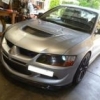Wolf 3D V4 vs PowerFC
Announcements
-
Similar Content
-
Latest Posts
-
By thatjawncrazy · Posted
GTSboy, thank you again. i’ve been reading all the other SAU RB25 vacuum line threads and you have the utmost patience for people asking “where do my vacuum lines go”. it’s appreciated. i did also enlist a few other RB guys local to me. i would like to run 5 to 4. turbo pressure side to wastegate actuator. i would like to run 3 to 1. power steering air valve line to intercooler outlet. (this is how it was previously). i was told 2 is the bleed port for the boost solenoid - which i’m not running - so should be capped. anyone see any problems with that? -
So yes. All of them. Something like 98% of all fuel in the USA has 10% ethanol: https://afdc.energy.gov/fuels/ethanol-fuel-basics It's labelled as like, AKI, 87, 91, 93 with an E10 or E5 or E15 label on the pump. At a certain point, it's not just "E10" instead of 91. It is 91, 95, 98, and all of them have 10% Ethanol in them. You can also get E85 and E30 which is why you do see some people rolling around with E30 tunes in them.
-
By Stringycheese · Posted
Thanks for the response. This is an 04 EP3 Type R. JDM spec. Fairly certain they're just basic BC racing coils. I do plan to keep as the ride quality on stock I've been told is pretty meh given Sydney roads. If I were to go down that avenue, does NSW require them to be a certain spec (close to original) etc? -
I've had two super conflicting experiences with blue slips. My 30 year old E39 waltzed through with no issues but my brother in law was knocked back on 12 y/o 3 series due to wiper blades and some cracking in a control arm bush. What kind of coil overs? Do you want to keep them after? If it was me I'd get some dirt cheap shocks and springs from eBay or scumtree. Not ideal but will get you over the line and might even be less than $1k.
-







Recommended Posts
Create an account or sign in to comment
You need to be a member in order to leave a comment
Create an account
Sign up for a new account in our community. It's easy!
Register a new accountSign in
Already have an account? Sign in here.
Sign In Now